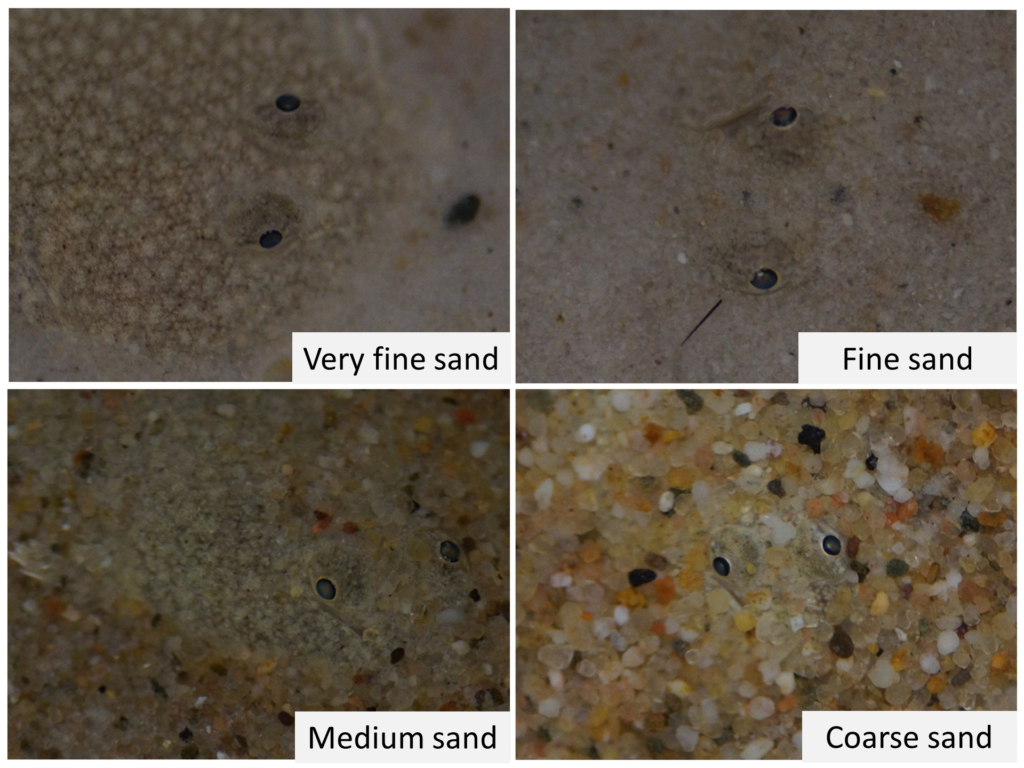Marine ecology
Everyone likes the beach, but only few know that below the water there are, besides fish, hundreds of different worms, shellfish, crabs, shrimps and other animals. The first objective on marine ecology is to understand how the coastal benthic community would respond when a large amount of sand is deposited on the seafloor. Because benthic organisms live in between the sand grains, they also risk being negatively affected by any coastal modifications, such as sand nourishments; these are known to bury and suffocate local benthic organisms. The second objective focused on the consequences of nourishment activities on the function of the shallow coastal zone as a nursery for juvenile flatfish.
The hidden animal life at the Sand Motor
by Simeon Moons
Together these animals make up an enormous biomass, an essential part of the marine ecosystem. Because they live in-between the sand grains they have the potential to shape the seafloor, but they also have a large chance of being (negatively) affected by any coastal modifications, like nourishments. I have investigated how the Sand Motor affects the macrozoobenthic community in time and space and how this compares to regular shoreface nourishments and natural coastlines.
Results clearly show a change of the macrobenthic community over time after disturbance by a nourishment. Biodiversity is distinctly lower after recent shoreface nourishment activities; it increases over the course of 10 years, but it does not reach the biodiversity found at unnourished areas. Furthermore, sediment grain sizes appear to increase at recently nourished sites, affecting the community composition. In contrast, the Sand Motor increases environmental heterogeneity far beyond its own size, thereby increasing biodiversity along the coastline, though it is far from perfect and still evolving.
The most important conclusion I can draw from my results is that nourishment design matters.
If we want to maintain a healthy coastal ecosystem that offers us food, clean water for recreation, natural esthetics and in some cases increased flood defence, than we should design a sustainable coastline. My work is a step in that direction, to be used by the scientific community, policymakers, coastal landscape managers and practitioners. On the one hand we show that the impact of shoreface nourishments is larger than generally assumed, possibly affecting ecosystem functioning and services. On the other hand we display several opportunities to improve the design of nourishments; size, shape and sediment composition. Nourishment design matters and should be considered carefully in making long-term predictions.

Marine food webs in the shallow coastal sea
by Marjolein Post
The research consisted of an experiment, applied and theoretical approach. Sediment preference for sole was tested in a preference chamber and important habitat conditions were identified with field data from the Sand Motor. The combined results has served as the input for a theoretical model that can predict the effects of different nourishment scenario’s on the growth of juvenile plaice, sole and turbot along the Dutch coast.
The identification of the key variables for juvenile flatfish presence in valuable nursery grounds is essential for the application of future nourishments. In addition, the developed knowledge will aid in the identification of the best timing, size and frequency of nourishments to stimulate juvenile flatfish growth.
Knowledge on the effects of nourishment on juvenile fish has so far been lacking. Previous studies have mostly focused on the benthic community. Our model approach can translate the effects of benthos directly to juvenile fish growth. The results of the sediment preference experiment highlight the importance of grain size for juvenile flatfish and therefore stresses the importance of suitable grain size of nourishment sand.
It turned out that juvenile flatfish such as sole and plaice have a specific preference for sediment type.
Nourishment activities could force them to settle in unfavorable habitats with possible consequences for their growth and recruitment for the adult population. The lagoon of the Sand Motor had a temporary attraction for juvenile plaice in 2012, where juveniles in the lagoon had higher growth rates than along the shore. This indicates the possibility for habitat enhancement with a modified nourishment design.

More information on these topics can be found in this book.
